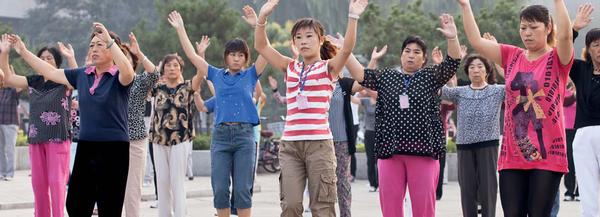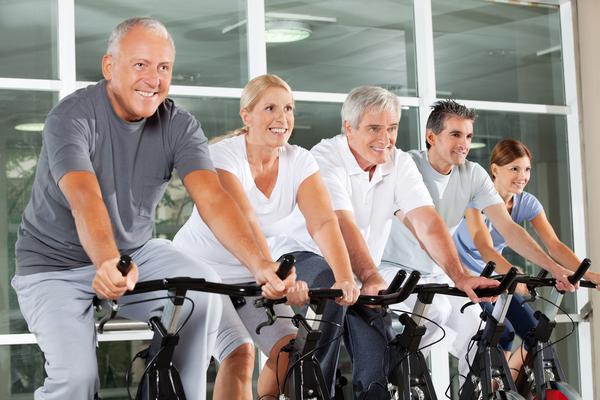
|
 |
Health Club Management Handbook - Health trends

Trends

|
|
| Health trends
|

A look at the hottest trends impacting the health and wellness industry worldwide
|
|
HEALTH AND WELLNESS KNOWLEDGE VENTURING TEAM, THE FUTURES COMPANY
|
|
 |

LATIN AMERICA: ENJOYABLE HEALTH |
 |
Sebastian Codeseira, director, and Wanda Elfenbaum, analyst – Buenos Aires
With obesity and diabetes epidemics on the horizon, consumers in Latin America are being pressed by governments, the media and their social circles to lead a healthier lifestyle. They are aware they cannot count on their weakened public health system to support them.
People are therefore trying to swap their traditionally more reactive approach to health, beginning instead to engage in preventative measures. However, faced with a plethora of often contradictory information, many are giving up and forgetting about the whole health issue.
We live in a region that gives a lot of importance to emotions, and the emotional aspect of health. Stress has become a serious issue: 80 per cent of the Latin American population now live in cities, leading hectic urban lifestyles. Consumers have therefore become very concerned about maintaining their emotional health – something that we can see reflected in the appearance of new services like laughter workshops.
This offers opportunities within the health and wellness sector for simple, enjoyable solutions that help consumers take steps to prevent health problems. That doesn’t only mean personalised workouts and nutritional plans, but also tapping into the growing focus on emotional health by ‘emotionalising’ physical activity. That could mean introducing new and fun ways to exercise, such as Kangoo Jumps – low-impact shoes that capitalise on the youthful, playful joy that comes from jumping up and down. The opportunity is there to encourage consumers to believe they can be ‘healthy and enjoying it’.
| |


|
| Photo: © TUPUNGATO/SHUTTERSTOCK.COM |

A concern for emotional health has led to services such as ‘laughter workshops’ |
|
|
 |

EMERGING ASIA: HEALTHY PROSPECTS |
 |
Vera Kiss, analyst
Following years of solid growth, the rising incomes of Asia’s emerging middle classes have put fitness and spa facilities in the reach of new consumer groups. But at the same time, lifestyles have become more urban and sedentary, with a more Westernised diet, contributing to a higher incidence of overweight and obesity in many markets.
In some emerging markets, overweight has been associated with material success and thus been seen as a desirable feature. Nonetheless, popular and celebrity culture also play a strong role in shaping people’s notions about what the ideal physique looks like. In India in particular, the body images propagated by the country’s highly popular movie industry, and the admiration for celebrity cricket players, have driven the acceptance of more athletic body ideals. This partly explains the high uptake of physical exercise among affluent, urban Indian men: 52 per cent report regular gym attendance and 54 per cent participate in physical activity.
Meanwhile, golf and country club culture has grown in both India and China, with increased uptake of golf in second-tier Indian cities and the number of golf courses in China more than tripling between 2004 and 2011, to over 600.
However, fitness and spa operators must also understand local exercise and body culture. In China, this includes the popularity of daily group exercising in public spaces, including line dancing formats that blur the boundary between socialising and exercising. Traditional forms of exercise, such as tai chi, are based on deep-rooted philosophical traditions but are open to new adaptations, as seen in the popularity of softball tai chi (tai chi rouliqiu), which combines elements of tennis with tai chi. Yoga is also becoming popular, with an estimated 200 studios in Shanghai, but the high cost of classes makes it a pursuit of the affluent.
Yoga has also experienced a boom in India, with many workplaces now offering classes. It seems this is being driven as much by global trends as by local tradition, with the growing variety of yoga styles on offer including those, such as Bikram, currently enjoying celebrity status in Western markets.
As Asian consumers look to better manage their health, there will be opportunities for operators to mix traditional local activities with new global fitness trends to drive participation.
| |


|

In China, daily group exercise in public spaces blurs the boundary between socialising and exercising |
|
|

|
Brett Denuo, consultant – US
While health is high on our list of priorities, living a healthy lifestyle is often sacrificed as a chaotic, busy world demands more of our time and energy. Yet we’ve reached a tipping point: something must change. The challenge is to better incorporate healthy habits into daily life.
In the future, we’ll see more examples of health solutions turning up in places and spaces we would have never dreamed of. In 2010, Washington DC offered HIV/AIDS screening tests at DMV (Department of Motor Vehicles) locations around the city. Since then, we’ve witnessed flu shots being offered at airports and more health clinics popping up in retail locations.
Meanwhile, from a fitness perspective, Bogota in Colombia has received accolades for its efforts to transform the urban environment and promote more physical activity among its residents. Elsewhere, an innovative Vertical Gym concept has allowed gym and fitness spaces to be created in the already densely packed slums of Caracas, Venezuela.
As a growing percentage of the global population find themselves living in cities, there’ll be a need for more creative use of urban space to provide opportunities for people to be active and to exercise.
In addition to the broad range of community outreach programmes already being offered by fitness operators around the world, gyms and health clubs can also evolve within their four walls. It’s possible that one day, areas typically reserved for free weights, fitness classes and treadmills will fight for floorspace with relaxation rooms and zones where members can de-stress and learn new skills to live healthier, more balanced and well-adjusted lives.
Personal trainers are already evolving into lifestyle coaches and this trend will continue, complemented by in-house nutritionists and psychologists. The health club of the future will be much more multi-faceted, giving time-pressed consumers a one-stop shop for all things health.
In a time when consumers are being told to be healthier, but are struggling to find the time and energy to do so, simplicity and coaching will be essential. Evolutions are already underway to bring health services to non-traditional health venues. It won’t be long before traditional health venues also evolve to help today’s over-worked, over-extended, overweight consumers adjust for a new world.
| |


|

The Vertical Gym has allowed fitness spaces to be created in the Caracas slums |
|
|

|
Louise Kennedy, consultant
Fitness is becoming more personal. It’s not just about personal training, but about activities that are tailored to people’s daily routines and lifestyles, their specific fitness goals, preferences, abilities – and age.
Older people want to feel young at heart, but also recognise the age-related health issues they must deal with: weight maintenance, cancer and heart disease risks, balance and mobility issues and so on. Today, 80 per cent of those aged 55 and over say they would like to be able to monitor their own health more effectively. They are increasingly likely to embrace age-appropriate fitness activities that help them improve the quality of their later years and distance themselves from a wide range of negative age-related stereotypes.
Older people are also becoming more socially engaged on and offline, with leisure and fitness activities increasingly seen as a social outlet, enhancing emotional wellbeing. In the future, we’re likely to see more gyms launching tailored, age-specific activities to appeal to the growing generation of fit over-55s.
| |


|

Those over the age of 55 are increasingly likely to embrace age-appropriate fitness |
|
|
The Futures Company is a leading strategic insight and innovation consultancy, with particular expertise in futures and foresight work – exploring the future needs, motivations and behaviours of consumers, and the broader dynamics shaping the marketplace. The company has teams in the UK, US, Mexico, Brazil and Argentina and partnerships in China, India and Poland.
WEB: www.thefuturescompany.com
TWITTER: @FuturesCo
|
|
From Health Club Management Handbook 2013, p56
|
|
 |
| Originally published in Leisure Handbook 2014 edition
|
|
 |
|
